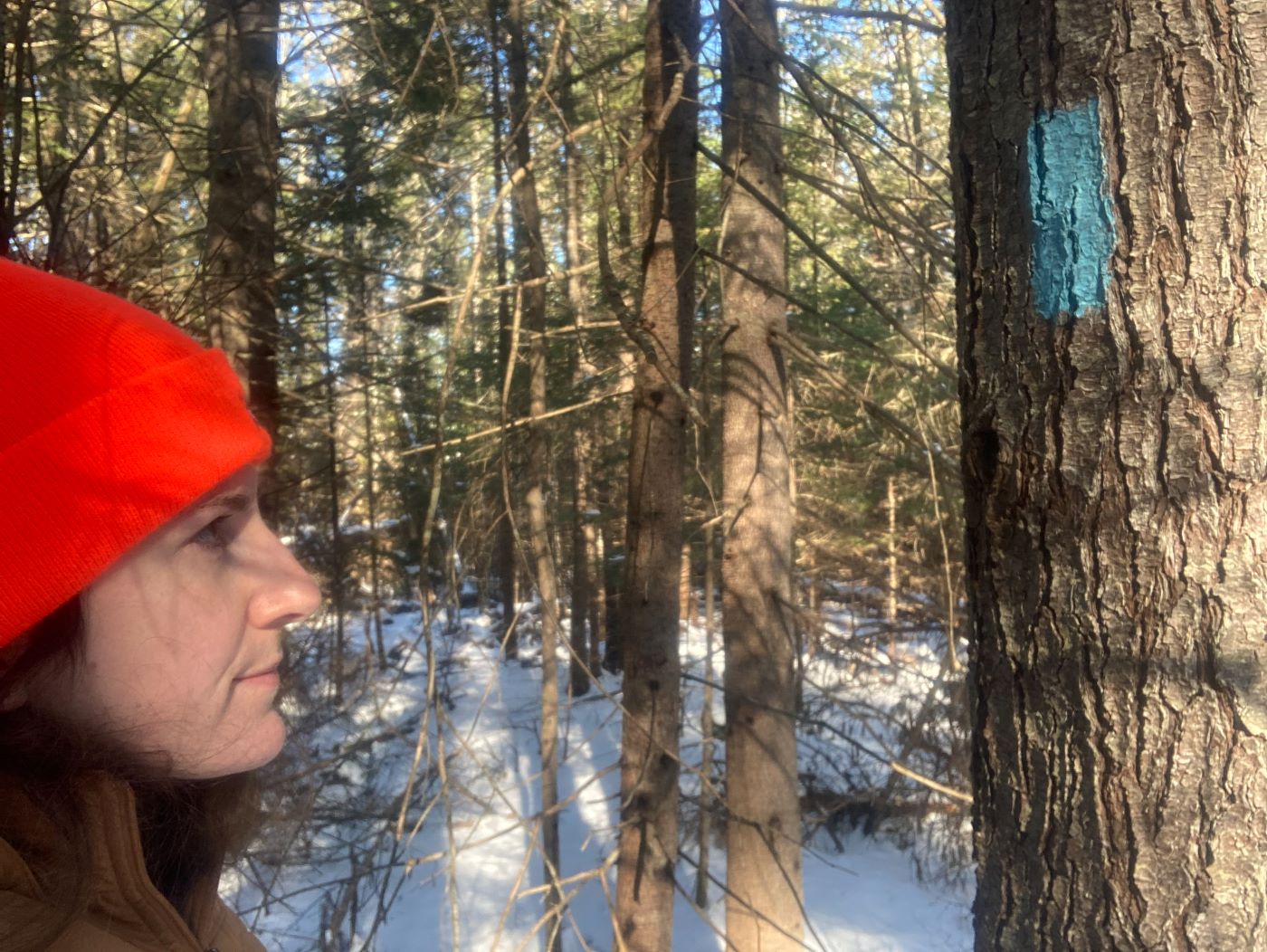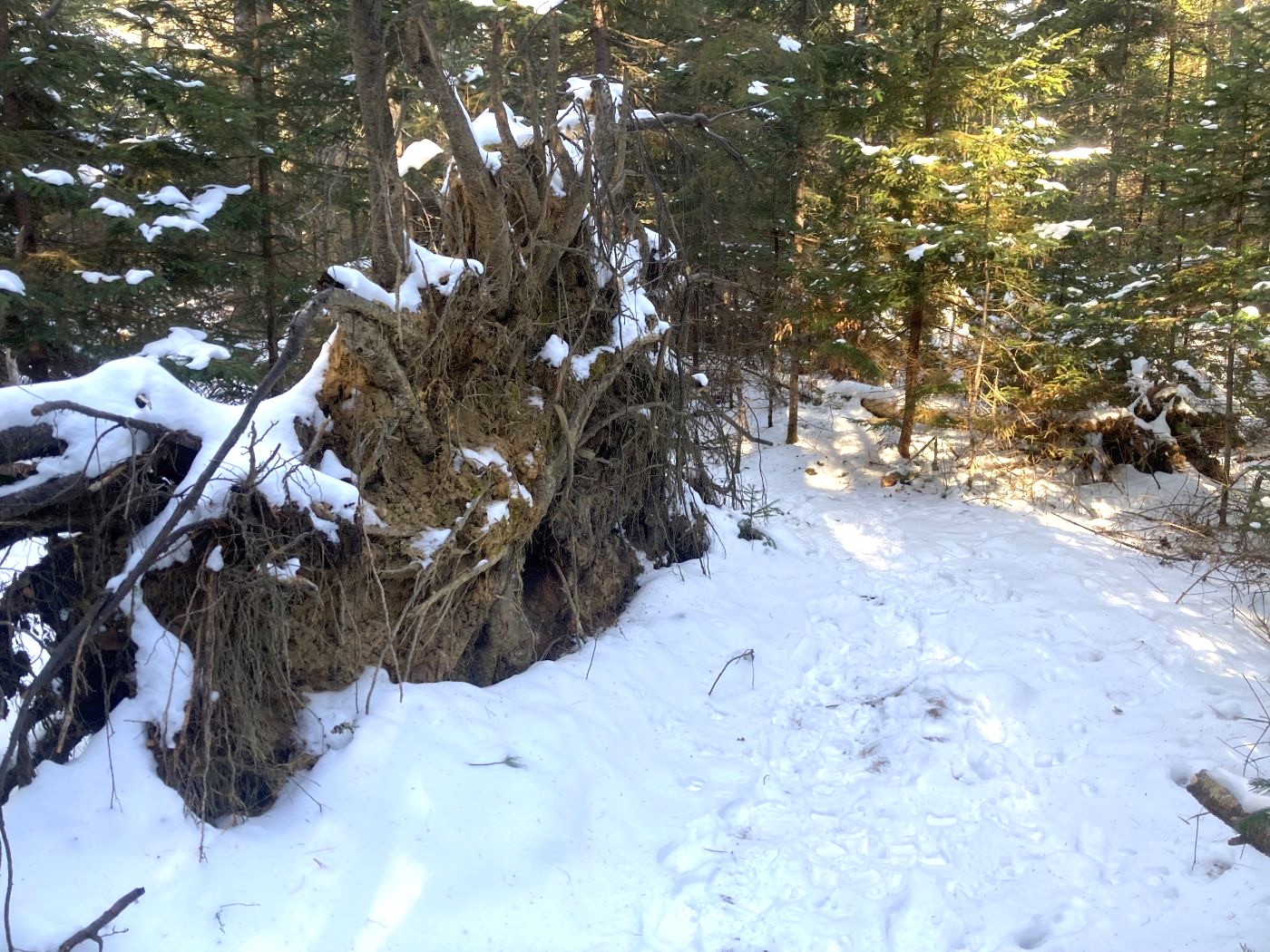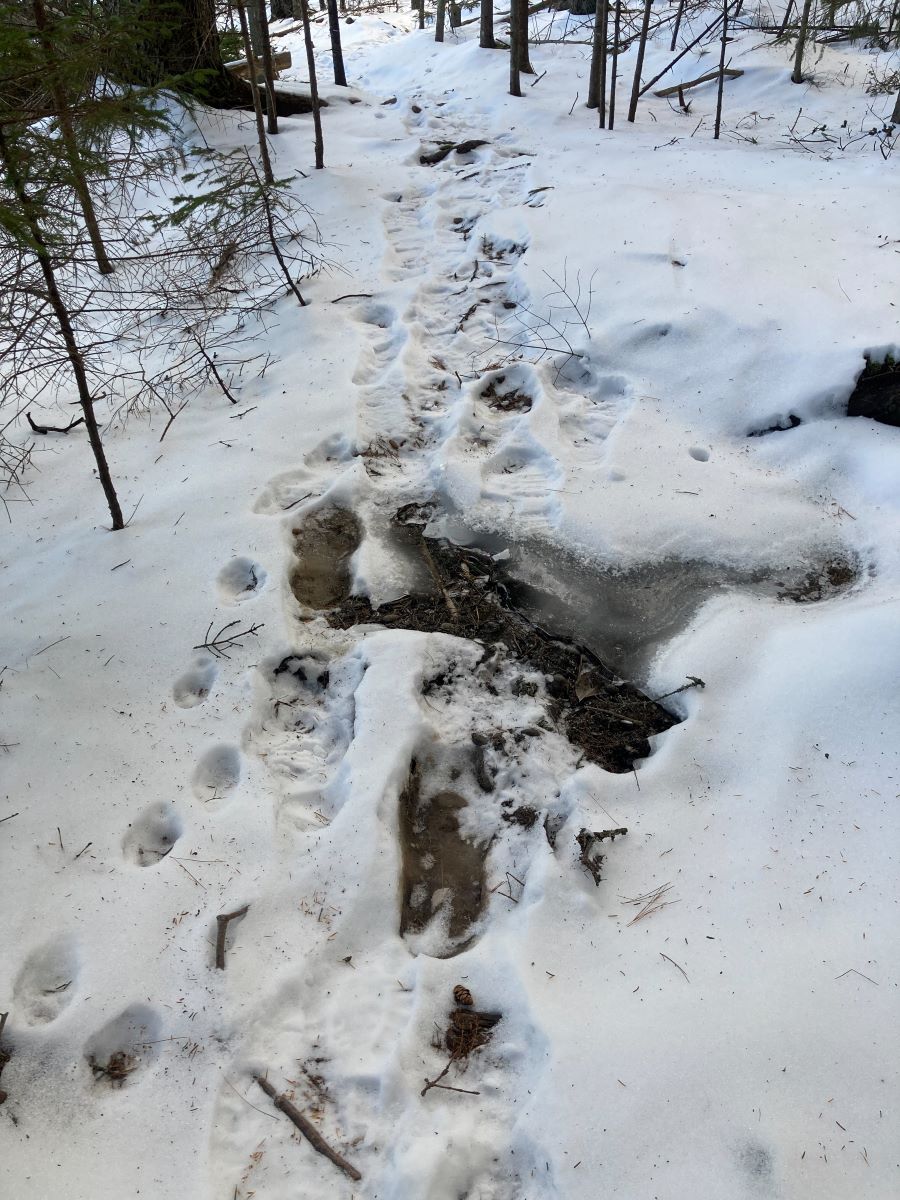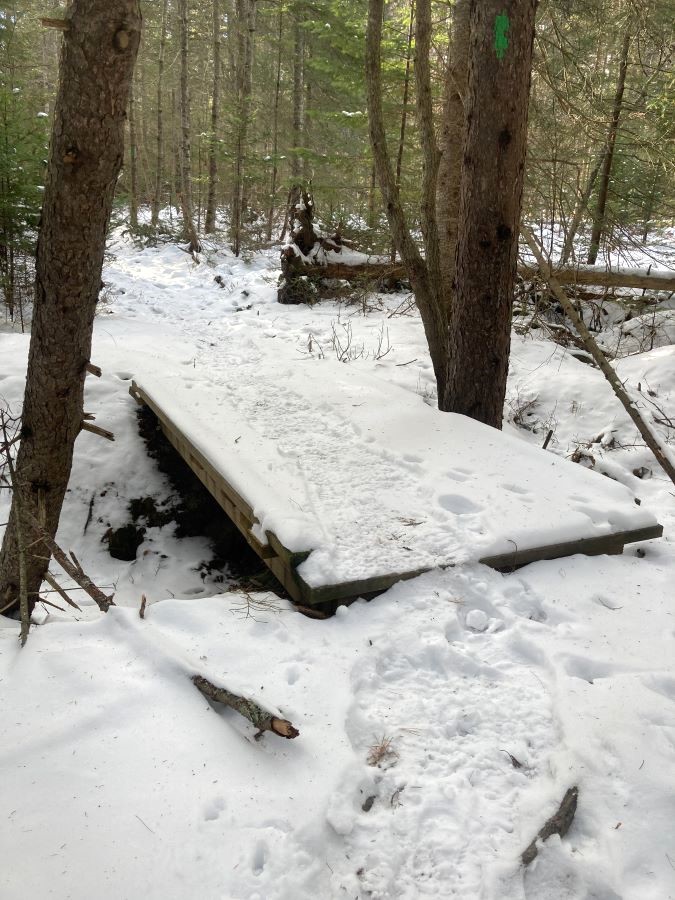
Maine Audubon sanctuaries are the heart of the organization, which makes the trail networks found within them the veins. Trails connect people with nature and allow them to experience all that an area has to offer in a respectful way. In order to minimize impact on the land and keep access open, Maine Audubon’s Properties Department continues to monitor trail conditions, while striving to create sustainable networks that protect the resource and provide a positive user experience.
Snowy winter months may not be the ideal time for trail maintenance, but they certainly provide us with an opportunity to use our trail eyes to assess several elements of the network that may be overlooked during the busy summer season.
 Trees located along a trail can tell us a lot about where we are and what condition the tread surface may be in below the snow. During weather events, trees can be uprooted and take a large amount of stone and soil with them. When this happens directly where the trail passes, it’s a good indicator that there will need to be some level of tread rehabilitation done during the summer months. If the trail tread is not repaired in these disturbed areas, rates of erosion accelerate and the area typically becomes wet and unmanageable.
Trees located along a trail can tell us a lot about where we are and what condition the tread surface may be in below the snow. During weather events, trees can be uprooted and take a large amount of stone and soil with them. When this happens directly where the trail passes, it’s a good indicator that there will need to be some level of tread rehabilitation done during the summer months. If the trail tread is not repaired in these disturbed areas, rates of erosion accelerate and the area typically becomes wet and unmanageable.
 Winter months can also be a good time to scout out spots that offer up a view that showcases a specific area well. When leaves of trees and the understory thin out, the landscape can present you with a different perspective and provide a new opportunity for folks to engage with the environment.
Winter months can also be a good time to scout out spots that offer up a view that showcases a specific area well. When leaves of trees and the understory thin out, the landscape can present you with a different perspective and provide a new opportunity for folks to engage with the environment.
 Tread surfaces that have dense ice patches or sounds of moving water can be indicative of a drainage issue. If these spots aren’t being frozen and packed in with snow in the dead of winter, they will likely persist in being problematic during the spring and summer months.
Tread surfaces that have dense ice patches or sounds of moving water can be indicative of a drainage issue. If these spots aren’t being frozen and packed in with snow in the dead of winter, they will likely persist in being problematic during the spring and summer months.
 Snowpack conditions can provide an opportunity for a load rating safety inspection of structures that exist throughout the network. Visible bridge structures should be assessed from the side (when possible) to look for any sag, breakage, or movement that may have occurred around the abutments.
Snowpack conditions can provide an opportunity for a load rating safety inspection of structures that exist throughout the network. Visible bridge structures should be assessed from the side (when possible) to look for any sag, breakage, or movement that may have occurred around the abutments.
Last but not least, winter can be a great time to take a closer look at the blazes or trail markers throughout a network. Trails that are open for winter use should have markers that are highly visible and placed at an appropriate height. Packed snow can elevate the tread surface a few feet, so the placement of trail blazes should account for that. A good rule of thumb is to paint or attach markers 5-6 feet up from the base of a tree. Trail users should be able to see blazes when looking straight ahead, rather than having to searchfor them down below. Low and inconsistent blazing can increase the risk of trail users getting off the intended path or stumbling into an object that may be ahead of them.

So while this wet snow and ice might not seem like the best time to be out on the trails, the conditions actually provide helpful clues to help us improve trail health and sustainability.
